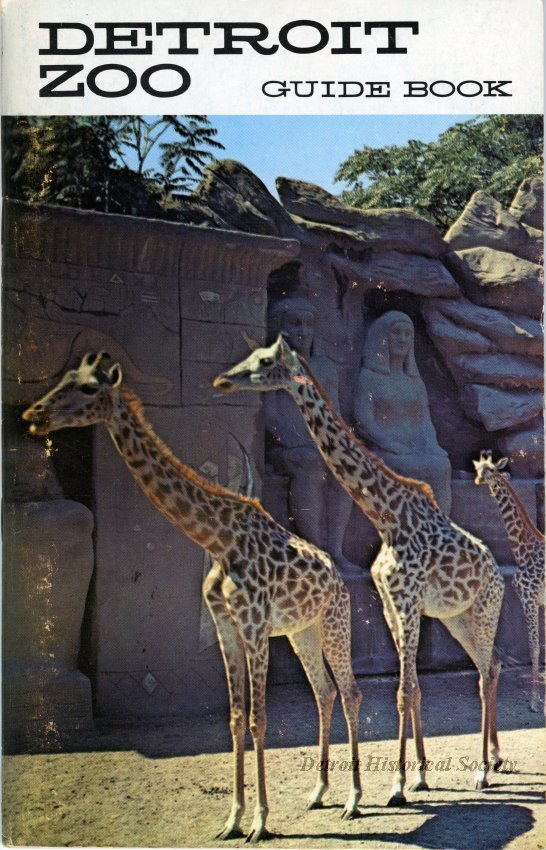The first Detroit Zoo, which was established in 1883, was housed on Michigan Avenue, across the street from what would become Tiger Stadium. Leading Detroiter Luther Beecher was instrumental in purchasing animals from a traveling circus that shuttered after going broke. The Detroit Zoological Garden and its wildlife had a short stay on Michigan Avenue. The zoo was closed after one year due to lack of funding and the building was turned into a horse market, with several animals finding a home in displays on Belle Isle.
A second attempt to establish a zoo was made in 1911, when several prominent Detroiters organized the Detroit Zoological Society and began planning for a world-class zoo. After several false starts, the Zoological Society eventually bought property just north of 10 Mile Road along Woodward Avenue. Renowned designer Heinrich Hagenbeck of Hamburg, Germany accepted the challenge of creating Detroit’s Zoo, creating a “cageless environment” for the animals. Using moat designs, he placed the animals in what looked like their natural habitats.
The zoo opened at its new site on August 1, 1928 to record crowds of 150,000 people. Rides on Paulina the elephant were available for one nickel, but the most popular exhibit that first year was a new set of lion cubs. From 1933 to 1934, the Civil Work Administration and Federal Emergency Relief Administration provided funds for additional habitats. From 1934 to 1937, the federal Works Project Administration built animal hospitals and the administration building as well as providing major landscaping. In 1939, the Zoo’s most famous icon was installed, with the opening of the Rackham Memorial Fountain, sculpted by Corrado Parducci. In the next year, Paulina the Elephant retired after 500,000 riders. For several decades, animal shows including performing elephants and chimps were held in the zoo, but were eventually ended due to ethical concerns.
Today the Detroit Zoo features the world-renowned National Amphibian Conservation Center, opened in June 2000, and one of the largest polar bear exhibit in the world – the Arctic Ring of Life. It also made headlines in 2005 as the first high-profile zoo in the United States to retire its elephants, sending beloved pachyderms Wanda and Winky to the Performing Animal Society (PAWS) sanctuary in California. In 2016, the award-winning Polk Penguin Conservation Center was opened, the largest penguin enclosure in the world.
In Spring 2006, the City of Detroit signed a long-term operating agreement with the non-profit Detroit Zoological Society. The agreement ceded day-to-day management control of operations to the Society, while the city retained ownership of the assets. In August 2008, voters in three metropolitan Detroit counties approved a millage to help fund the Zoo’s operations. The Detroit Zoological Society also manages the Belle Isle Nature Center on Belle Isle Park.

